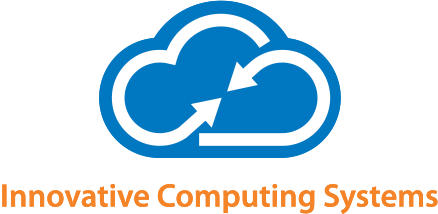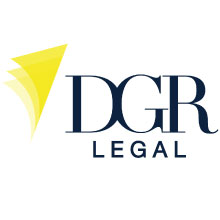By Rippe & Kingston
Using key performance indicators (KPIs) to measure the success of your law firm can help identify what is working well, and help guide strategic decisions for the future. However, a shocking number of law firms don’t use any performance metrics beyond measuring and tracking the hours billed at the attorney and firm levels.
In an October 2016 Thomson Reuters Legal Executive Institute article, the author reported on a survey of approximately 690 law firms. Of the firms that responded to the survey, only 42 percent used any metrics beyond hours billed, and only six firms used more than four different metrics.
Those metrics included the following:
- Client experience or satisfaction
- Cost of client development or acquisition
- Pipeline dollar value per attorney
- Aged or overdue accounts receivable
- Collected billings by attorney
- Matter profitability
- Budget versus actual or opened matters
Why These Metrics Matter
When firms look beyond traditional benchmarking to incorporate some or all of these metrics, they have actionable information to guide budgeting, staffing and the firm’s overall strategic direction.
Let’s take a closer look at why the key performance indicators identified above matter, and how they can help measure profitability for the firm.
Client experience or satisfaction
If you are simply assuming your clients are happy because you haven’t been told otherwise, it might be time to think again. A full 96 percent of unhappy customers won’t complain; the majority will simply not return and will seek out a competitor when they need legal services. And, think about this: unhappy clients won’t refer others to you.
Take the time to measure client satisfaction. Then, use the information you learn to drive change within your firm. You don’t need any special software or tools to take advantage of this KPI.
Cost of client development or acquisition
Do you know what it costs you to turn one prospect into a client? Does it matter with which practice area the prospective client needs help? Are certain attorneys more effective and efficient at converting prospects to clients than others?
If you’re not keeping track of the cost of client development, chances are good that it’s higher than you think. When you’re armed with specific, measurable information, you can find ways to lower costs in areas where they are too high, and devote additional marketing and communications dollars to practice areas that show low client acquisition costs.
Pipeline dollar value per attorney
Related to the cost of acquiring new clients or converting prospects, laws firms should also be measuring the potential value of prospects and clients at various stages of the pipeline.
Measuring this KPI at the firm level can help with overall firm budgeting. When you take it a step further to measure it for each active attorney, you may learn you have a backlog assigned to one particular associate, or in one particular practice area. This can lead to difficult, but productive, conversations with attorneys and staff.
Aged or overdue accounts receivable
Most firms are tracking accounts receivable in some fashion. However, if your firm is not watching overdue accounts receivable or monitoring aging reports, you may be missing opportunities to capture revenue in a timely manner.
Running aging reports by attorney can also provide eye-opening results, identifying both attorneys with significant client accounts that are overdue, as well as attorneys who seem to be on top of aged accounts. If your firm handles billing in a centralized fashion, these types of attorney-specific differences will likely not be as apparent as in a firm where attorneys handle their own billing.
Collected billings by attorney
As is true with overdue accounts, tracking collected billings at the attorney-level can help you identify if there are certain attorneys whose clients aren’t paying. Once you identify such a trend, you can delve deeper into the same to determine a root cause and take actions to change the statistics.
Matter profitability
Law firms that only track hours billed may assume that every legal matter the firm handles is more-or-less as profitable as the last, and the next. After all, attorneys should be applying their respective hourly billing rates to the client hours allocated to each of the legal matters they handle.
Firms that monitor profitability by legal matter are often shocked to find out that certain types of client engagements are costing the firm significantly more money than others. Put another way, some client matters produce a much higher profit for the firm and its partners than other client engagements.
When you start monitoring and reporting on profitability at the client engagement level, associates and partners may become more conscious of managing time and expenses more efficiently.
Budget versus actual or opened matters
Finally, firms may budget for a target number of legal matters they intend to handle each month, quarter and year. This may be part of the attorney goal-setting process. However, if you’re not tracking the actual number of matters handled or opened, it’s nearly impossible to evaluate how closely the firm and its personnel followed the goal.
Legal Practice Management Software Can Help Firms Stay on Top of These KPIs
When your firm implements a practice management system, you can have access to each of these metrics with just a few clicks of a mouse. What’s more, you can design reports and automate their delivery, so you don’t even need to think about running them.
The more information you have at your fingertips, the better prepared your firm will be to reach its short-term and long-term growth goals.
With its original foundation as a CPA firm, Rippe & Kingston understands the importance of providing strong accounting principles, revenue raising features and profitability analytics to help law firms achieve and exceed their financial goals today and in the future. Since 1980, law firms of all sizes have relied on Rippe & Kingston for the financial tools necessary to run their practice. Legal Management System (LMS) provides management with the needed oversight, workflow efficiencies, reporting tools, support infrastructure and early warning systems to keep law firms profitable and on track. The Rippe & Kingston team may be reached at [email protected].





















